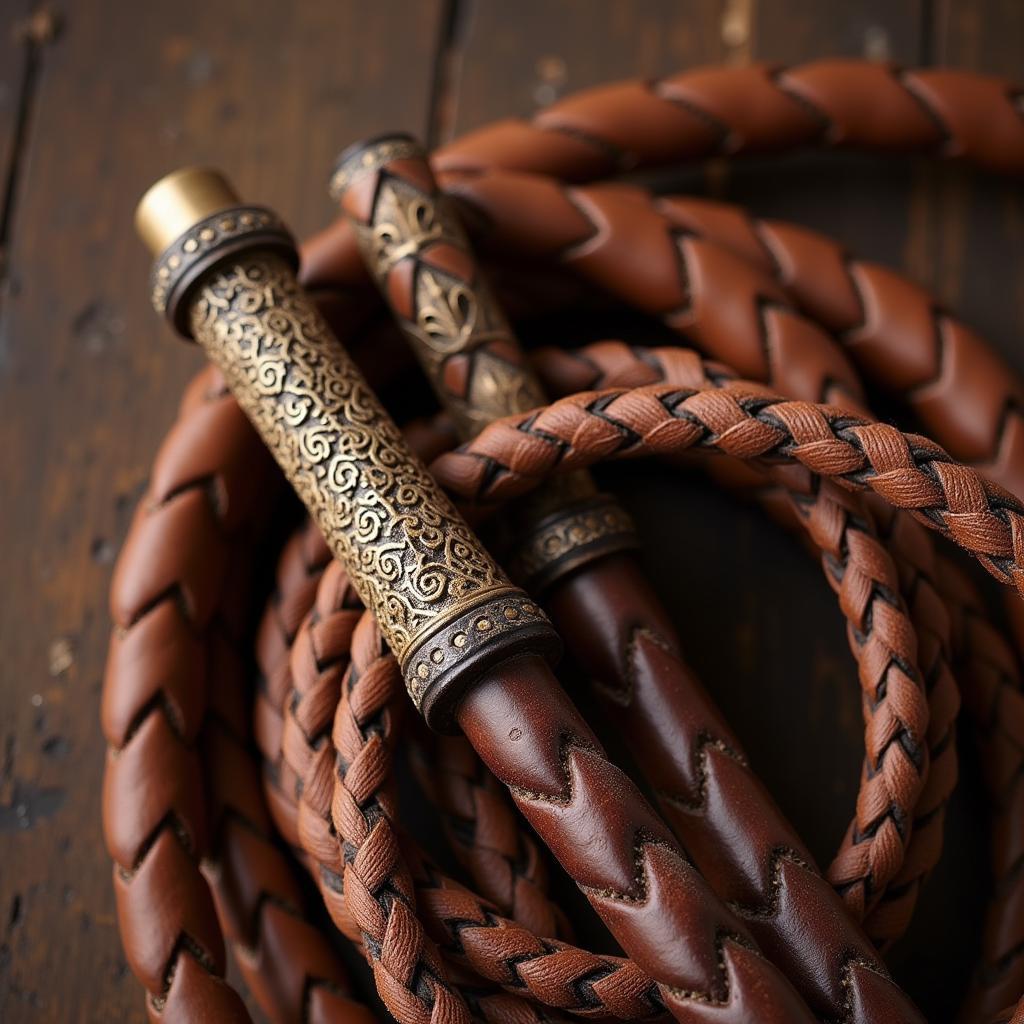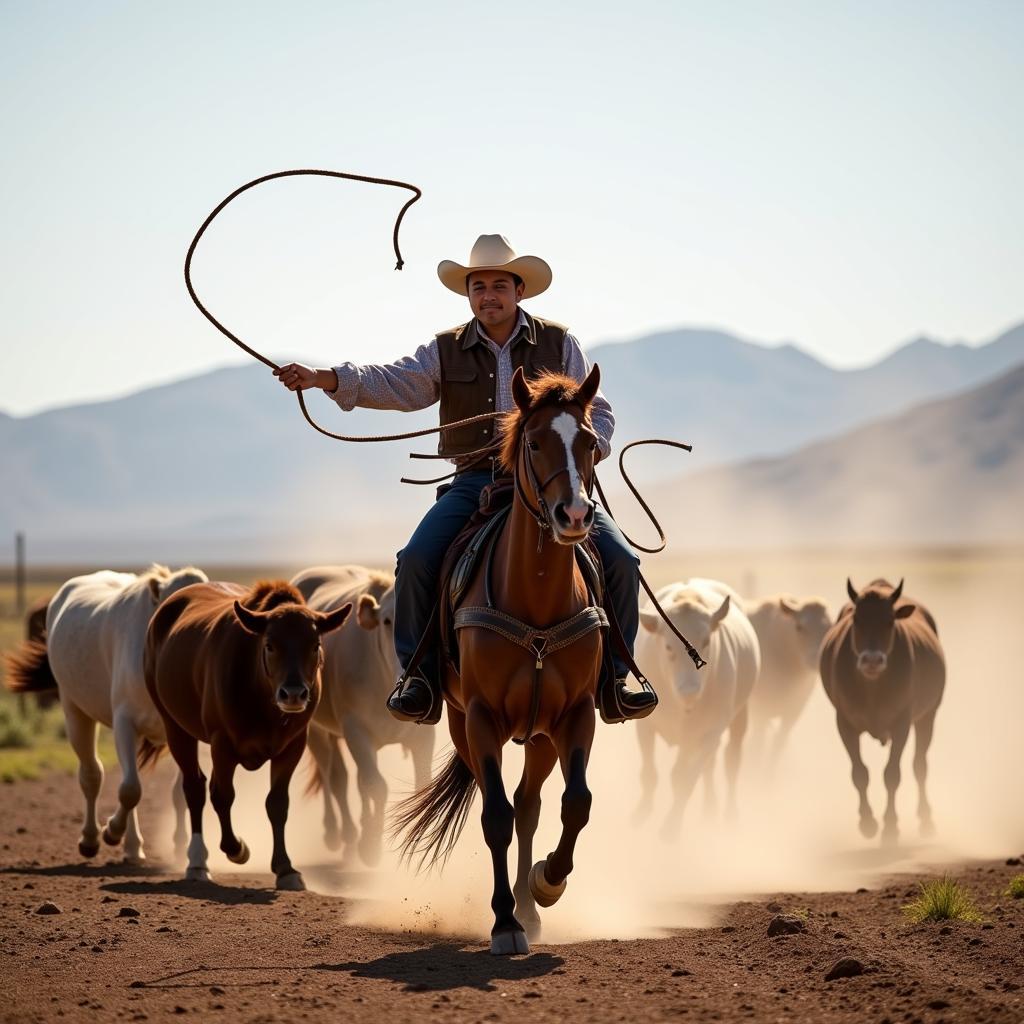The Mexican Horse Whip, often crafted with intricate details and high-quality materials, is an object steeped in history and tradition. While it may conjure images of cowboys and ranches, it’s essential to approach the topic with a balanced perspective, acknowledging both its practical uses and the ethical considerations surrounding any tool that can be used to inflict pain.
 Traditional Mexican Horse Whip Design
Traditional Mexican Horse Whip Design
A Glimpse into the Past: The Mexican Horse Whip’s Historical Significance
The origins of the Mexican horse whip are intertwined with the history of horsemanship in Mexico, dating back centuries. These whips, often called “fustas” or “rebenques,” were initially essential tools for vaqueros, the skilled horsemen who worked on vast ranches herding cattle.
The whip’s design was purposeful. The long, flexible handle, typically made from braided leather or horsehair, provided reach and control. The lash, often made from braided leather or rawhide, delivered a sharp crack when used correctly, serving to guide and direct the horse without causing harm.
 Mexican Vaquero Using Horse Whip While Herding Cattle
Mexican Vaquero Using Horse Whip While Herding Cattle
Beyond the Ranch: Evolving Uses and Perceptions of the Mexican Horse Whip
Over time, the Mexican horse whip transcended its purely practical role. It became a symbol of craftsmanship, with artisans taking pride in creating beautiful and durable whips. These whips were often adorned with silver accents, intricate braiding, and personalized details, becoming prized possessions passed down through generations.
The Mexican horse whip also found its way into charreria, Mexico’s national sport, which celebrates traditional horsemanship and rodeo skills. Here, the whip is used in specific events, showcasing the rider’s precision and the horse’s training.
 Mexican Charro Competitor Using Horse Whip in Competition
Mexican Charro Competitor Using Horse Whip in Competition
However, it’s crucial to acknowledge that, like any tool, the Mexican horse whip can be misused. The potential to inflict pain means it should only ever be used responsibly and ethically, with the horse’s well-being as the top priority.
Ethical Considerations: Using the Mexican Horse Whip Responsibly
At Justus Horses USA, we believe in promoting ethical horsemanship practices. This means understanding that any tool used in interacting with horses should be used with knowledge, respect, and a commitment to the horse’s welfare.
Here are some key points to consider regarding the ethical use of a Mexican horse whip:
- Training and Knowledge: Using a horse whip effectively and ethically requires proper training. It’s essential to understand how to use it as a communication tool, not as a punishment.
- Clear Communication: A horse whip should be used to reinforce other cues, such as leg pressure or voice commands. It should never be the primary method of communication.
- Minimal Force: The goal is always to use the lightest touch possible. A well-timed flick of the wrist, resulting in a sharp crack, is often all that’s needed.
- Positive Reinforcement: Combine the use of a whip with positive reinforcement techniques, such as rewarding desired behavior with praise or treats.
If you’re considering using a Mexican horse whip, we strongly encourage you to seek guidance from an experienced horse trainer. They can help you develop the skills and knowledge to use this tool responsibly and ethically.
Conclusion: Appreciating the Mexican Horse Whip with Responsibility
The Mexican horse whip is a testament to the rich history of horsemanship in Mexico. Its intricate craftsmanship and traditional significance make it a fascinating object. However, we must remember that it’s a tool that demands respect and responsible use. By prioritizing the horse’s well-being and seeking proper training, we can appreciate the Mexican horse whip’s heritage while ensuring ethical and humane treatment for these magnificent animals.